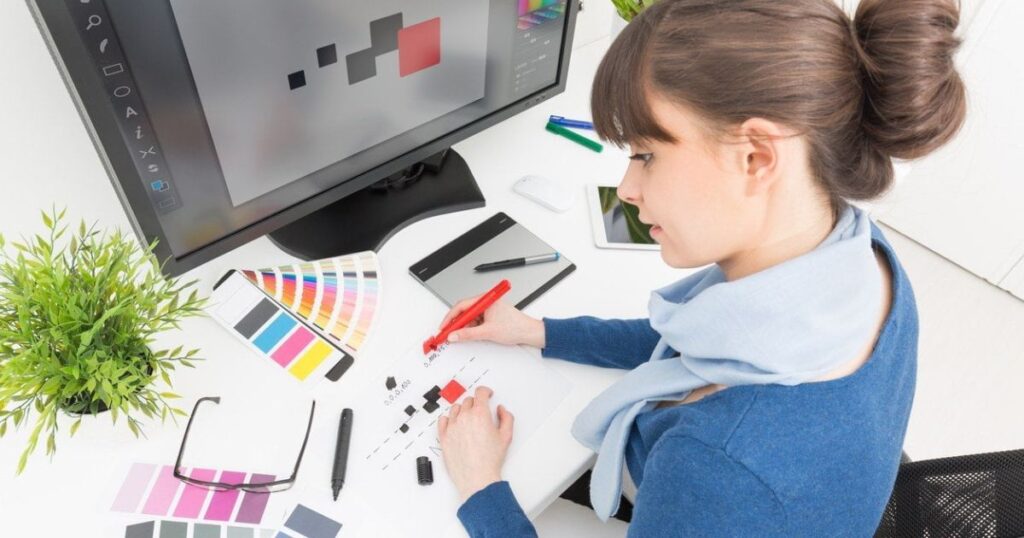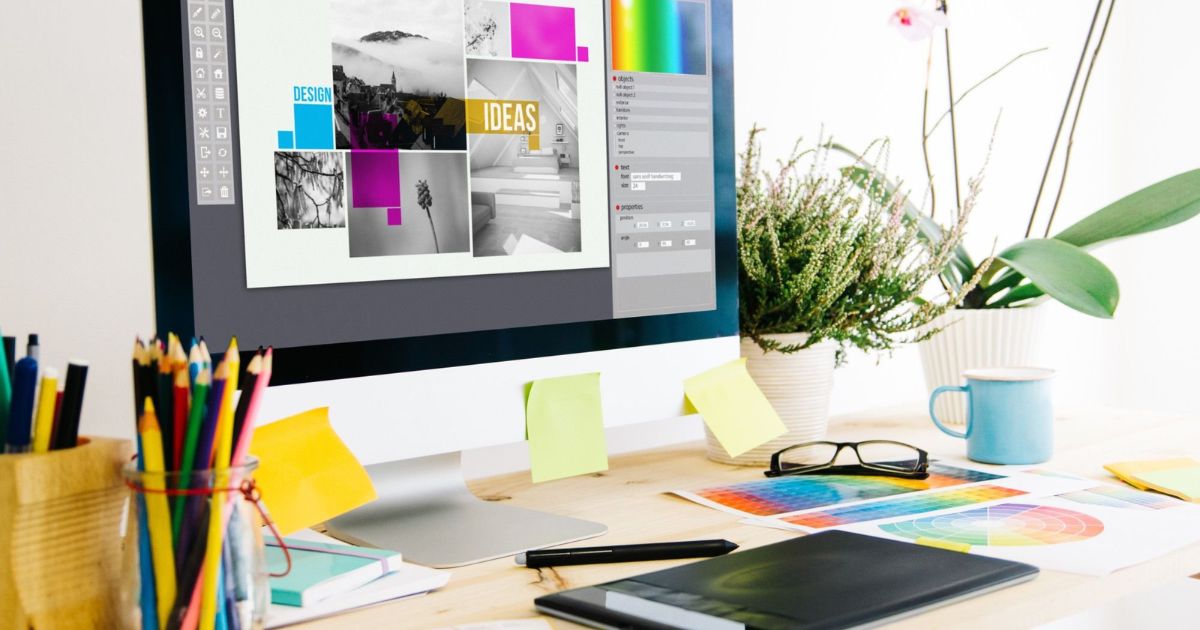Graphic design is always evolving. New trends emerge each year. These trends shape the visual landscape around us.
From websites to logos, design trends influence everything. They reflect changes in technology and culture. Understanding these trends is crucial for designers and businesses alike.
In this post, we’ll explore 10 current graphic design trends. These are shaping the industry right now. Let’s explore the exciting world of contemporary design.
AI-Enhanced Design Methods
AI-Enhanced Design Methods are revolutionizing the industry. Designers now leverage AI for various tasks. These include automated layout generation and smart image editing. AI can suggest color palettes based on current trends. It helps create variations of designs quickly. Machine learning algorithms can predict user preferences. This enables more targeted and effective designs. AI tools can also assist in font pairing and typography. They can generate custom illustrations or modify existing ones.
Some AI systems can even create entire brand identities. They analyze market data to inform design decisions. Despite these advancements, human creativity remains essential. Designers use AI as a collaborative tool, not a replacement. The technology enhances efficiency and expands creative possibilities. It allows designers to focus more on conceptual and strategic aspects. As AI continues to evolve, its role in design is likely to grow. This fusion of human creativity and AI capability is shaping the future of design.
Retro Pixels
Retro Pixels are making a big comeback in design. Designers are embracing the chunky, blocky look of early digital graphics. It’s nostalgic and eye-catching. This trend taps into 80s and 90s gaming aesthetics. Think Super Mario and Space Invaders. Pixelated fonts and icons are popping up everywhere. They’re used in logos, websites, and even animations.
The style works well for both playful and edgy designs. It stands out in a world of sleek, high-res graphics. Retro pixels add a fun, retro-tech vibe to modern designs. They’re especially popular with brands targeting millennials. The low-fi look feels authentic and handcrafted. It’s a refreshing change from overly polished designs. Plus, it’s versatile – working for various industries and styles.
Inclusive Visuals
Inclusive Visuals are becoming a top priority in design. It’s all about representing everyone. Designers are creating images that show diverse people and bodies. This includes different races, genders, ages, and abilities. It’s not just a trend – it’s a much-needed shift.
Companies are realizing the power of inclusivity. They’re updating their brand imagery to be more representative. Stock photo sites now offer more diverse options. Illustrators are creating characters with varied features and skin tones.
This trend goes beyond just showing diversity. It’s about authentic representation. Designers are avoiding stereotypes and tokenism. They’re consulting with diverse groups to get it right. Inclusive visuals help more people feel seen and valued. They reflect the real world we live in.
Also Read: Online jobs for Teens: Ideas to Make Money
Experimental Typography
Experimental Typography is shaking up the design world. It’s all about pushing the boundaries of traditional text. Designers are getting bold and playful with letters. They’re treating type as art, not just words.
We’re seeing letters stretched, warped, and broken apart. Some designs mix 2D and 3D elements in type. Others play with texture and depth. Kinetic typography, where letters move and animate, is huge. It’s especially popular in digital and video content.
This trend is about making words visually exciting. It can convey emotion and grab attention. Designers are creating custom fonts for brands. They’re using unusual layouts that challenge readability. But it’s a delicate balance. The goal is to be eye-catching without losing meaning.
Scrapbooking
Scrapbooking is making a comeback in digital design. It’s bringing a handmade feel to screens. This trend mixes different elements in a collage-like style. It’s messy, personal, and full of charm.
Designers are using torn paper effects and sticker-like graphics. They’re combining photos, illustrations, and text in playful ways. It often looks like a physical scrapbook brought to life digitally. Textures like tape, paper clips, and polaroid frames are common.
This style taps into nostalgia and authenticity. It feels raw and honest in a world of polished designs. Brands use it to create a more personal connection with audiences. It works well for storytelling and showcasing products.
Social media is loving this trend. Instagram stories and TikTok videos often use scrapbook elements. It’s also popular in editorial design and event promotions. Even some websites are adopting this cozy, DIY aesthetic.
Heatmapping
Heatmapping is heating up the design world. It’s a trend that’s both functional and visually striking. Designers are using color gradients to represent data or emotions. It’s like turning information into a visual temperature reading.
This style often uses warm colors like reds and oranges for high intensity. Cool blues and greens represent lower intensity or activity. It’s not just for data visualization anymore. Designers are applying it to illustrations and backgrounds too.
Heatmapping is eye-catching and intuitive. It helps viewers quickly grasp complex information. In UX design, it shows where users focus most on a page. For branding, it can convey energy and emotion.
We’re seeing heatmap-inspired designs in logos and product packaging. Social media posts use this style to stand out. It’s also popular in infographics and annual reports. Even fashion and interior design are playing with heatmap aesthetics.
Maximalism
Maximalism is back with a bang. It’s the opposite of minimalism, embracing excess and bold choices. Think bright colors, busy patterns, and lots of details. Designers are layering elements to create rich, complex visuals. Nothing is too much in maximalism. It’s about expressing personality and rejecting restraint. We’re seeing it in websites, packaging, and brand identities.
Clashing patterns and vibrant color combos are common. Typography often mixes multiple fonts in one design. Maximalism can be chaotic, but there’s usually a method to the madness. It’s perfect for brands wanting to make a loud statement. This trend reflects a desire for more excitement in design. It’s a rebellion against the clean, white spaces we’ve seen for years. Maximalism says it’s okay to be bold, busy, and a bit over-the-top.
High Contrast and Bold Typography
High Contrast and Bold Typography is making a big impact. It’s all about grabbing attention and making a statement. Designers are using stark color differences to create visual punch. Black and white are common, but bright colors work too.
The text is often large and in-your-face. Heavy, sans-serif fonts are popular for this trend. Some designs mix thin and thick font weights for added contrast. It’s not just about size – the placement of text is crucial too.
This style works well for headlines and short phrases. It’s less about long paragraphs and more about key messages. Brands use it to stand out in crowded markets. It’s especially effective in posters, social media, and packaging.
Accessible Color Combination

Accessible Color Combinations are becoming a must in design. It’s about creating visuals that everyone can see and understand. Designers are focusing on color contrast and readability. They’re considering color blindness and visual impairments.
This trend isn’t just about following rules. It’s about smart, inclusive design. Tools like contrast checkers are now part of the design process. Designers are learning to balance aesthetics with accessibility.
Bold color pairs are still in, but with a twist. They need to meet accessibility standards. This often means adjusting shades or tones slightly. Text needs to stand out clearly against backgrounds. Icons and infographics are being redesigned for better visibility.
Nature-inspired Aesthetics
Nature-inspired Aesthetics are blooming in design. It’s a trend that brings the outdoors inside. Designers are using earthy colors, organic shapes, and natural textures. Think leafy greens, sandy beiges, and sky blues.
This style often features floral patterns and botanical illustrations. Wood grains and stone textures are popular in backgrounds. Curved lines and irregular shapes mimic nature’s imperfections. It’s a departure from rigid, geometric designs.
The trend reflects a growing desire for connection with nature. It’s calming and grounding in our digital world. Brands use it to convey sustainability and wellness. It’s especially popular in health, beauty, and eco-friendly products.
Conclusion
Graphic design is evolving fast. These trends reflect our changing world and values. They show a mix of nostalgia, technology, and social awareness. Designers are pushing boundaries and thinking outside the box. They’re balancing creativity with accessibility and inclusivity. Some trends embrace the digital future, while others reconnect us with nature and handmade aesthetics. It’s an exciting time to be in design. These trends offer something for everyone, from bold statements to subtle, thoughtful approaches.


